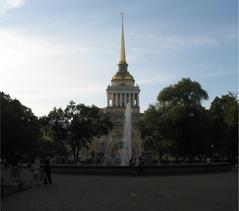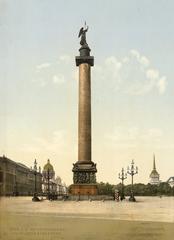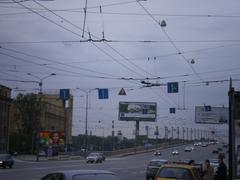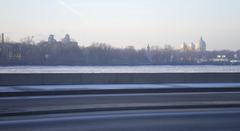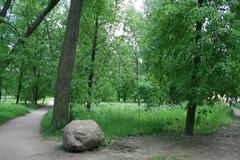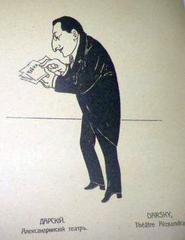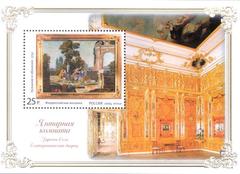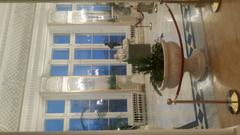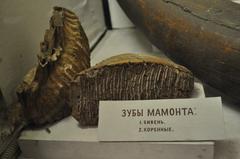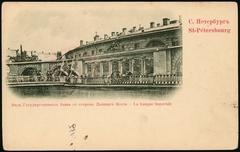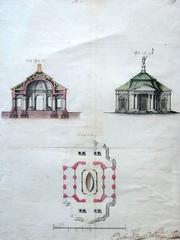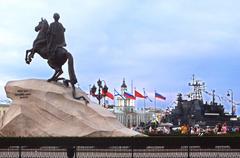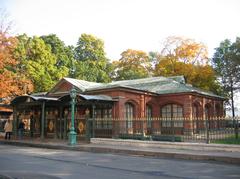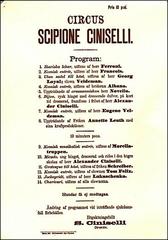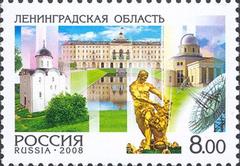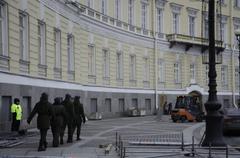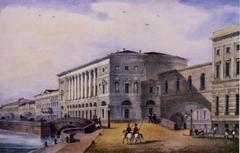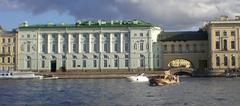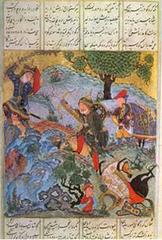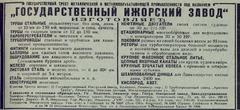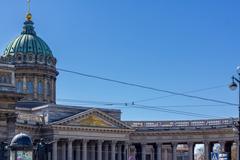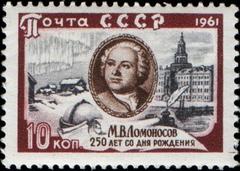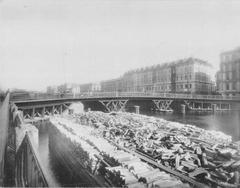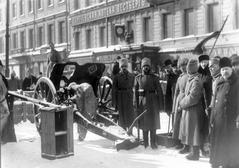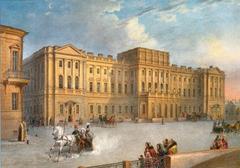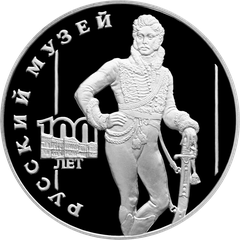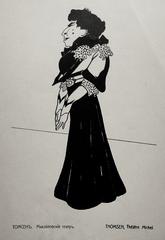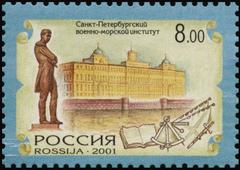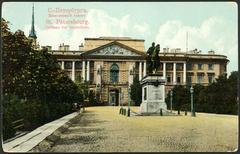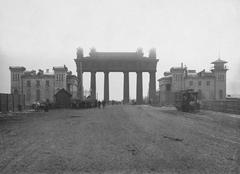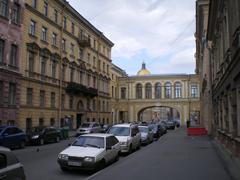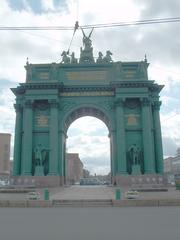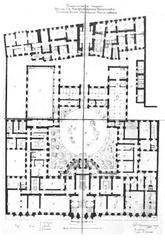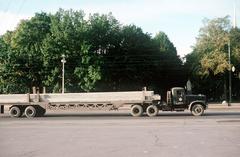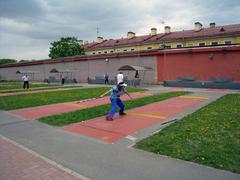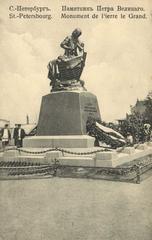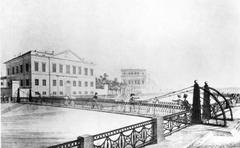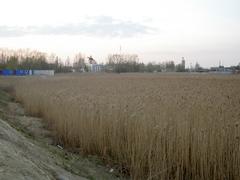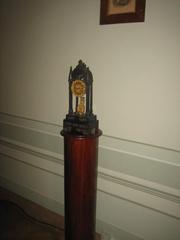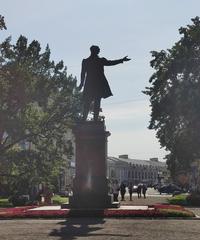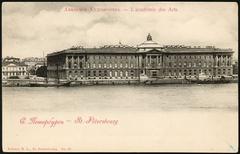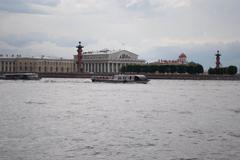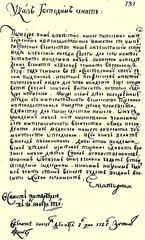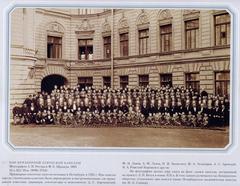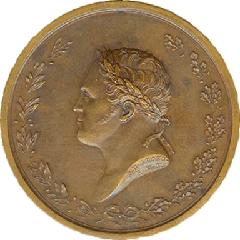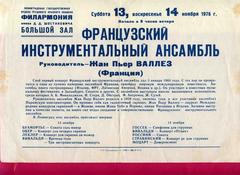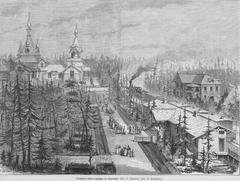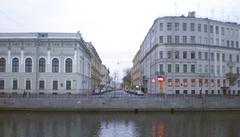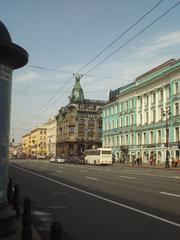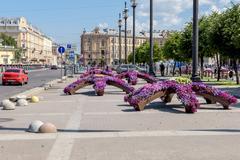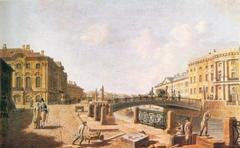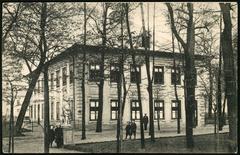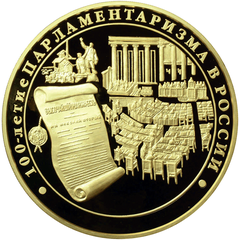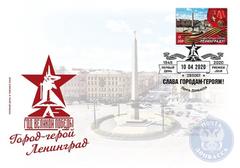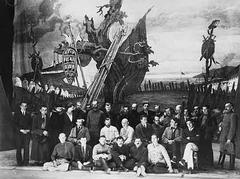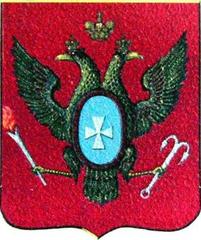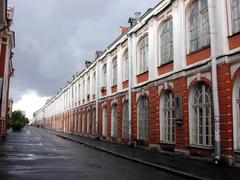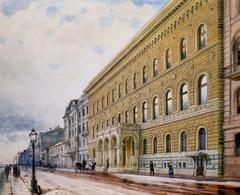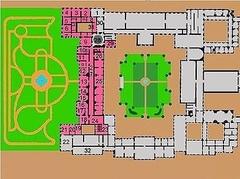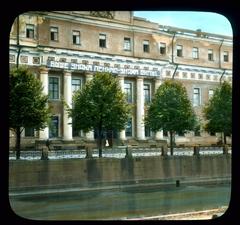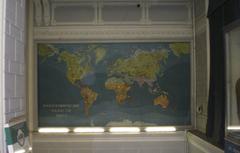Rybackaja Street Saint Petersburg: Visiting Hours, Tickets, and Historical Sites Guide
Date: 04/07/2025
Introduction
Rybackaja Street (Russian: Рыбацкая улица) weaves through the historic heart of Saint Petersburg, offering a lived-in tapestry of the city’s working-class roots, maritime past, and enduring cultural traditions. Unlike the grandiose boulevards or sweeping squares, Rybackaja Street provides travelers with a genuine glimpse into everyday life as shaped by fishing, trade, and community over centuries. This comprehensive guide details the street’s origins, architectural evolution, visitor information—including hours and tickets—nearby attractions, travel tips, and practical recommendations to ensure a memorable visit (The Incidental Tourist, Travelertopia, Introducing Saint Petersburg).
Table of Contents
- Introduction
- Historical Background and Urban Development
- Architectural Character and Community Life
- Key Landmarks and Attractions
- Visiting Rybackaja Street: Hours, Tickets, and Accessibility
- Getting There and Nearby Attractions
- Modern Preservation and Local Culture
- Practical Travel Tips
- Visitor FAQ
- Summary and Recommendations
- References
Historical Background and Urban Development
Founded in the early 18th century alongside Peter the Great’s vision for a “window to Europe,” Rybackaja Street grew from humble fishing settlements on the marshy riverbanks. Its name, stemming from the Russian word for “fisherman,” reflects its origins as a vital artery for supplying fresh fish and goods to Saint Petersburg’s burgeoning population and imperial kitchens (theincidentaltourist.com). Over time, Rybackaja Street became a key connector between riverside markets and the city interior, shaping the daily rhythms of commerce and community.
Architectural Character and Community Life
Unlike the ornate palaces of central Saint Petersburg, Rybackaja Street’s built environment tells the story of its working-class past. The 18th and 19th centuries saw the construction of modest wooden houses, brick warehouses, and workshops. Industrialization brought low-rise tenements and small factories, leveraging the street’s proximity to the Neva River and its network of canals for easy transport.
During the Soviet era, communal apartments (kommunalki) became the norm, with pre-revolutionary buildings repurposed for multiple families. Today, visitors can still spot decorative cornices, wrought-iron balconies, and distinctive brickwork—a tangible link to the street’s layered history.
Culturally, Rybackaja Street has long been a melting pot, home to Russian, Finnish, and Baltic German communities. Orthodox chapels, fish markets, and local taverns fostered a vibrant neighborhood spirit, further enriched by traditions that continue today in the form of artisan shops, cafes, and seasonal festivals (travelertopia.com).
Key Landmarks and Attractions
- Historic Fish Markets: Echoes of the street’s commercial roots remain in the form of preserved market buildings and stalls.
- Pre-Revolutionary Residences: Well-preserved 19th-century structures display neoclassical and art nouveau influences.
- Orthodox Chapels and Shrines: Intimate religious sites continue to serve as community anchors.
- Street Art and Open-Air Events: Murals and seasonal festivals, especially during the White Nights, enliven the area (OrangeSmile).
Nearby, visitors can easily access Saint Petersburg highlights such as:
- Peter and Paul Fortress
- Hermitage Museum (Official Hermitage Site)
- Kazan Cathedral
- Summer Garden
Visiting Rybackaja Street: Hours, Tickets, and Accessibility
- Street Access: As a public street, Rybackaja is open 24/7 with no entrance fee.
- Heritage Sites: Some interiors (churches, small museums) may have set hours and require tickets or donations. For example, the Peter and Paul Fortress is open daily 10:00–18:00 (tickets ~500 RUB).
- Markets and Local Businesses: Typically open 9:00–19:00.
- Accessibility: Cobblestone pavements can present challenges; most of the street is accessible on foot, but some older buildings have limited mobility access (Saint-Petersburg.com).
Getting There and Nearby Attractions
- Metro: Closest stations are a 10–15 minute walk; efficient and affordable (single rides ~70 RUB).
- Bus/Tram: Multiple lines serve the vicinity.
- Taxi/Rideshare: Apps like Yandex.Taxi and Uber are recommended; fares ~250–500 RUB from the city center (Penguin Travel).
- On Foot/Bicycle: The area is pedestrian- and cyclist-friendly, with rentals available.
Nearby attractions include the bustling Nevsky Prospekt, Kuznechny Market, and picturesque canal promenades for boat tours.
Modern Preservation and Local Culture
Rybackaja Street today balances preservation with vibrancy. Restoration projects protect architectural character while interiors are adapted for boutique hotels, galleries, and cafes. The street thrives with artisan shops, bakeries, and cultural events, particularly during the White Nights, when open-air performances and communal celebrations animate the neighborhood (orangesmile.com).
Practical Travel Tips
- Best Time to Visit: Late May to early July (White Nights festival) for extended daylight and lively events.
- Footwear: Comfortable walking shoes are recommended due to cobblestones.
- Dining: Sample Russian classics at nearby cafes and markets.
- Safety: The area is generally safe; stay alert in crowds and at night (The Broke Backpacker).
- Language: Russian is primary; English is spoken in tourist areas—translation apps are handy.
- Currency: Russian ruble (RUB); cards and cash both widely accepted.
- Connectivity: Free Wi-Fi is common; local SIM cards are inexpensive.
- Etiquette: Dress modestly in religious sites, and ask before photographing people.
Visitor FAQ
Q: What are Rybackaja Street’s visiting hours?
A: The street is open 24/7 as a public thoroughfare.
Q: Are tickets required?
A: No ticket is needed for the street itself. Some nearby attractions may charge admission.
Q: How accessible is the area?
A: Mostly accessible, but cobblestone streets and some historic buildings may pose challenges.
Q: What’s the best way to get there?
A: Metro, bus, tram, taxi, or on foot from nearby landmarks.
Q: Are guided tours available?
A: Yes, local agencies offer walking tours focusing on Rybackaja Street’s history and architecture (Saint Petersburg Essential Guide).
Summary and Recommendations
Rybackaja Street is a compelling window into Saint Petersburg’s living history, marked by resilient working-class communities, architectural diversity, and a spirit of cultural continuity. Its proximity to major landmarks, lively local markets, and welcoming cafes make it a rewarding stop for travelers seeking an authentic urban experience. For the richest experience, visit during the White Nights festival, join a guided walking tour, and take time to explore both the main street and its side alleys.
To stay updated on events and access personalized sightseeing guides, download the Audiala app and follow our social media channels.
References
- The Incidental Tourist - Saint Petersburg
- Travelertopia - Places to Visit in Saint Petersburg
- Introducing Saint Petersburg
- OrangeSmile - Saint Petersburg Culture
- Saint Petersburg Essential Guide
- Saint-Petersburg.com – Essentials
- Hermitage Museum Official Site
- Penguin Travel – Russia Guide 2025
- The Broke Backpacker – Best Places to Visit in Saint Petersburg
- Araioflight – Best Attractions in Saint Petersburg
